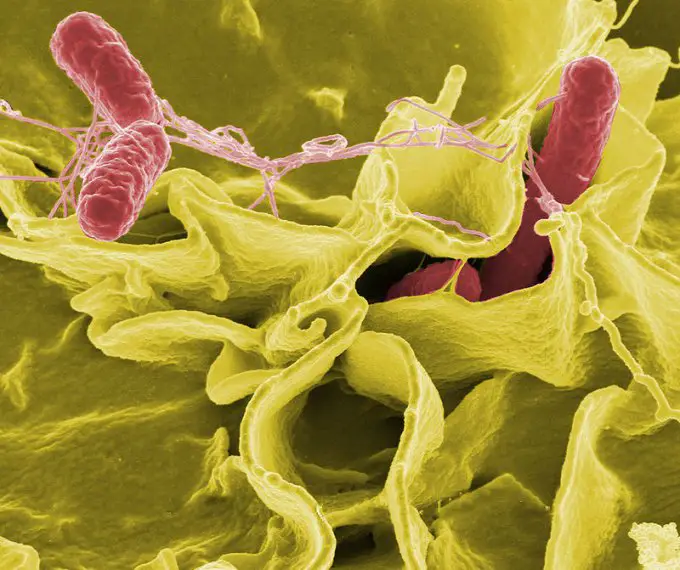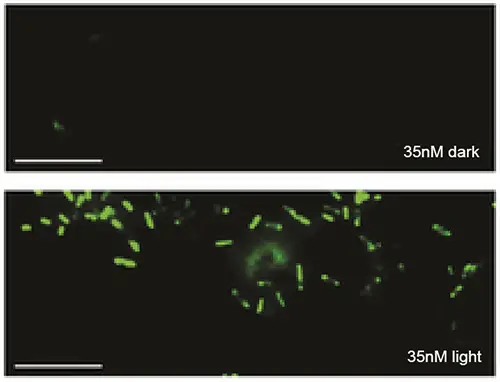
21st January 2016 Nanoparticles kill 90% of antibiotic-resistant bacteria Light-activated nanoparticles able to kill over 90% of antibiotic-resistant bacteria have been demonstrated at the University of Colorado.
Antibiotic-resistant bacteria such as Salmonella, E. Coli and Staphylococcus infect some two million people and kill 23,000 in the U.S. each year. Efforts to defeat these so-called "superbugs" have consistently fallen short, due to the bacteria's ability to adapt rapidly and develop immunity to common antibiotics such as penicillin. In 2014, the World Health Organisation declared this a "major global threat" and warned that the world is heading for a post-antibiotic era, in which even common infections and minor injuries which have been treatable for decades can once again kill. In this ever-escalating evolutionary battle with drug-resistant bacteria, we may soon have an advantage, however, thanks to adaptive, light-activated nanotherapy developed by scientists at the University of Colorado Boulder. Their latest research suggests that the solution to this big global problem might be to think small – very small. In findings published by the journal Nature Materials, researchers at the Department of Chemical and Biological Engineering and the BioFrontiers Institute describe new light-activated nanoparticles known as "quantum dots." These dots, which are 20,000 times smaller than a human hair and resemble the tiny semiconductors used in consumer electronics, successfully killed 92% of drug-resistant bacterial cells in a lab-grown culture. "By shrinking these semiconductors down to the nanoscale, we're able to create highly specific interactions within the cellular environment that only target the infection," said Prashant Nagpal, senior author of the study.
Previous research has shown that metal nanoparticles – created from silver and gold, among various other metals – can be effective at combating antibiotic resistant infections, but can indiscriminately damage surrounding cells as well. Quantum dots, however, can be tailored to particular infections thanks to their light-activated properties. The dots remain inactive when in darkness, but can be "activated" on command by exposing them to light, allowing researchers to modify the wavelength in order to alter and kill the infected cells. "While we can always count on these superbugs to adapt and fight the therapy, we can quickly tailor these quantum dots to come up with a new therapy and therefore fight back faster in this evolutionary race," said Nagpal. The specificity of this innovation may help reduce or eliminate the potential side effects of other treatment methods, as well as provide a path forward for future development and clinical trials. "Antibiotics are not just a baseline treatment for bacterial infections, but HIV and cancer as well," said Anushree Chatterjee, an assistant professor in the Department of Chemical and Biological Engineering at CU-Boulder and a senior author of the study. "Failure to develop effective treatments for drug-resistant strains is not an option, and that's what this technology moves closer to solving." Nagpal and Chatterjee are co-founders of PRAAN Biosciences, a Colorado-based startup that can sequence genetic profiles using just a single molecule – technology that may aid in the diagnosis and treatment of superbug strains. The authors have filed a patent on their new quantum dot technology.
Comments »
|








